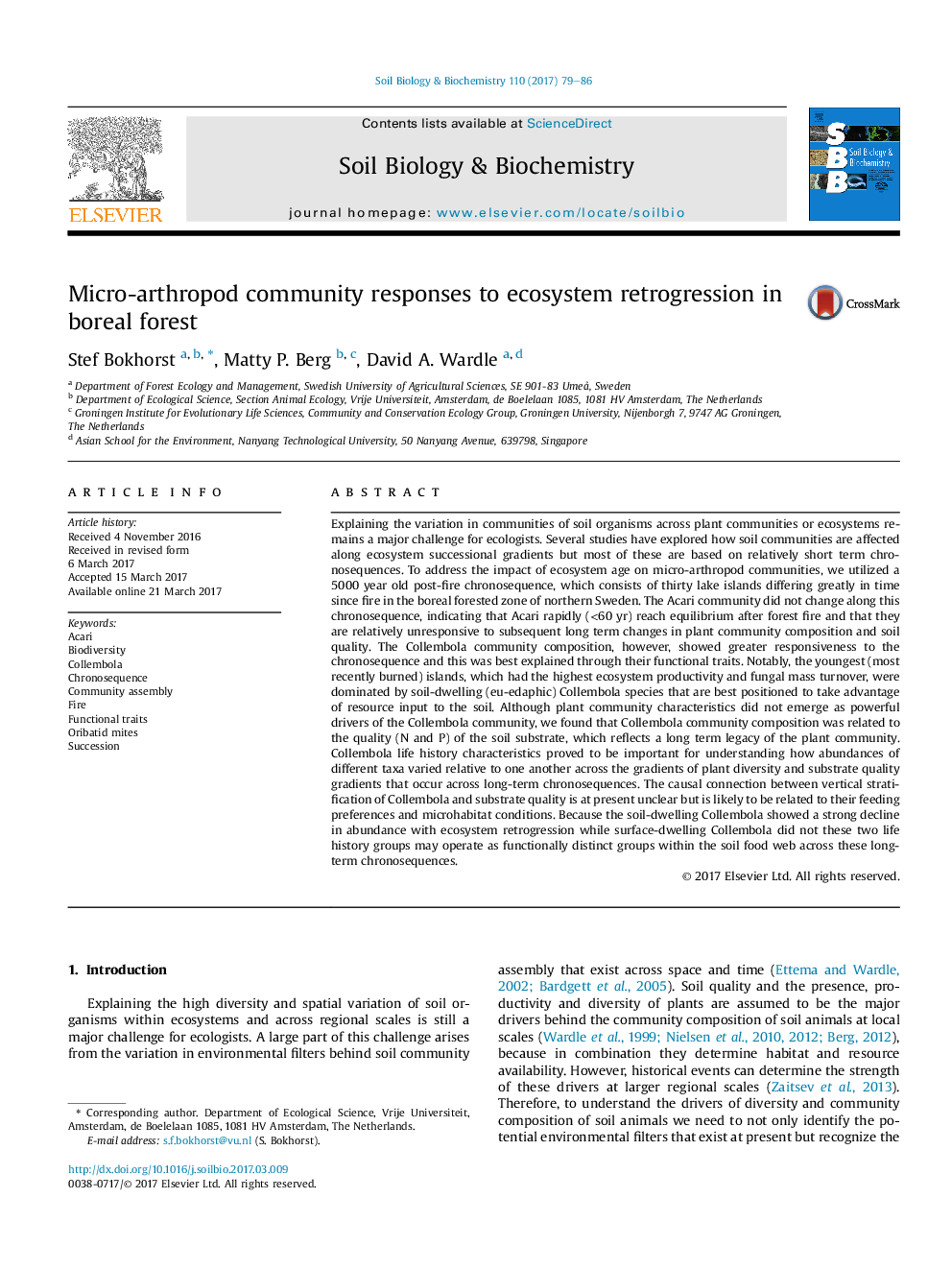| کد مقاله | کد نشریه | سال انتشار | مقاله انگلیسی | نسخه تمام متن |
|---|---|---|---|---|
| 5516401 | 1542574 | 2017 | 8 صفحه PDF | دانلود رایگان |
- Collembola community composition changes across a 5000Â y retrogressive chronosequence.
- Traits of Collembola also change and eu-edaphic Collembola dominate earliest stages.
- Acari community properties were invariant across the chronosequence.
- Changes in the Collembola community were related to long term soil fertility change.
Explaining the variation in communities of soil organisms across plant communities or ecosystems remains a major challenge for ecologists. Several studies have explored how soil communities are affected along ecosystem successional gradients but most of these are based on relatively short term chronosequences. To address the impact of ecosystem age on micro-arthropod communities, we utilized a 5000 year old post-fire chronosequence, which consists of thirty lake islands differing greatly in time since fire in the boreal forested zone of northern Sweden. The Acari community did not change along this chronosequence, indicating that Acari rapidly (<60Â yr) reach equilibrium after forest fire and that they are relatively unresponsive to subsequent long term changes in plant community composition and soil quality. The Collembola community composition, however, showed greater responsiveness to the chronosequence and this was best explained through their functional traits. Notably, the youngest (most recently burned) islands, which had the highest ecosystem productivity and fungal mass turnover, were dominated by soil-dwelling (eu-edaphic) Collembola species that are best positioned to take advantage of resource input to the soil. Although plant community characteristics did not emerge as powerful drivers of the Collembola community, we found that Collembola community composition was related to the quality (N and P) of the soil substrate, which reflects a long term legacy of the plant community. Collembola life history characteristics proved to be important for understanding how abundances of different taxa varied relative to one another across the gradients of plant diversity and substrate quality gradients that occur across long-term chronosequences. The causal connection between vertical stratification of Collembola and substrate quality is at present unclear but is likely to be related to their feeding preferences and microhabitat conditions. Because the soil-dwelling Collembola showed a strong decline in abundance with ecosystem retrogression while surface-dwelling Collembola did not these two life history groups may operate as functionally distinct groups within the soil food web across these long-term chronosequences.
Journal: Soil Biology and Biochemistry - Volume 110, July 2017, Pages 79-86
